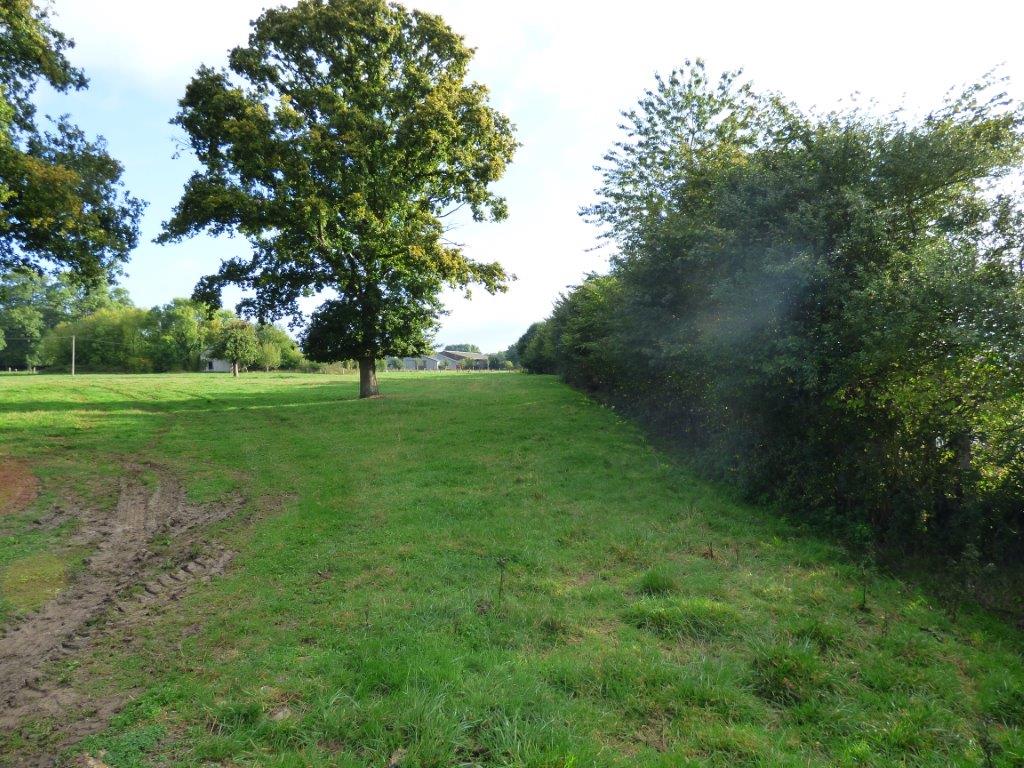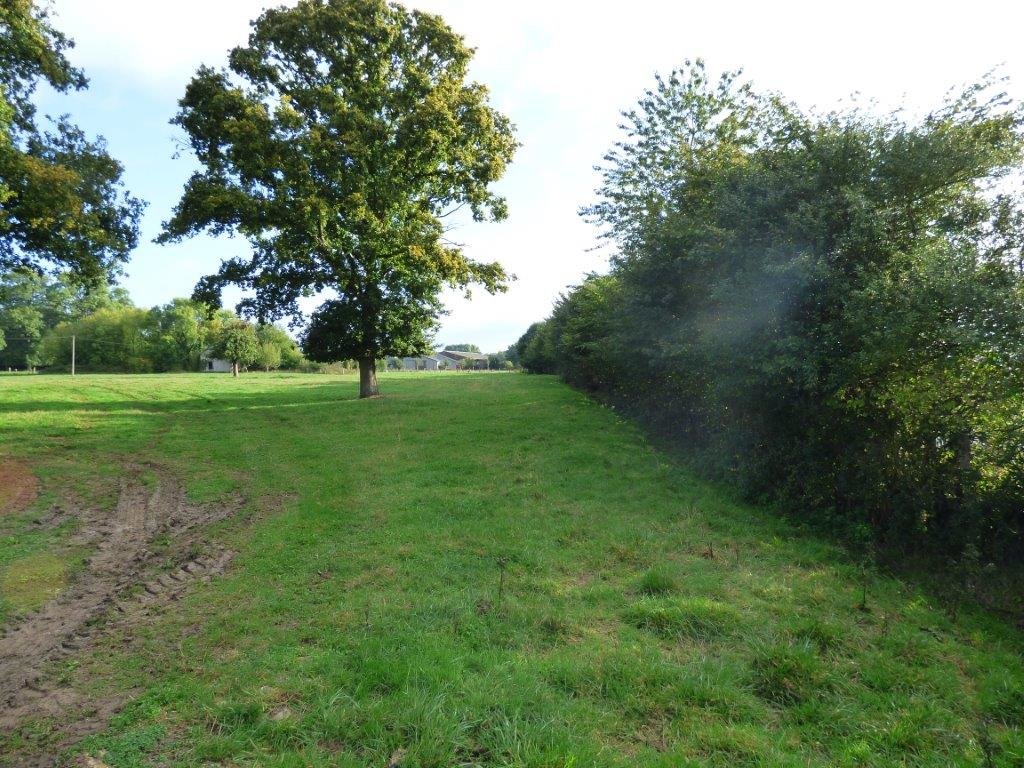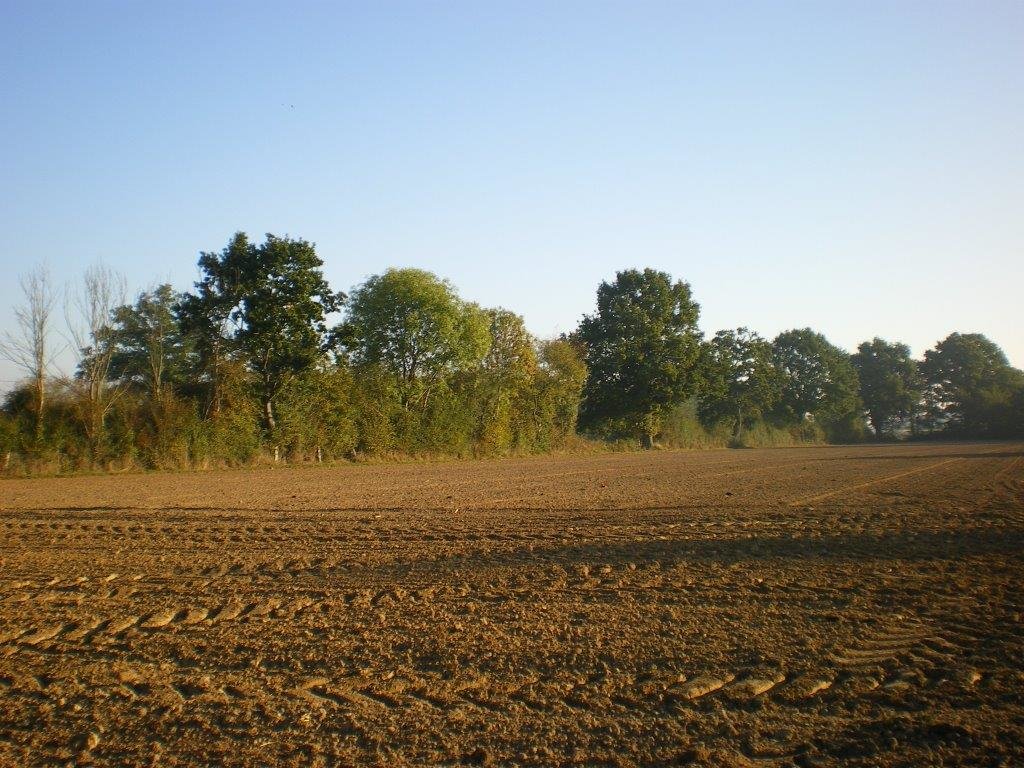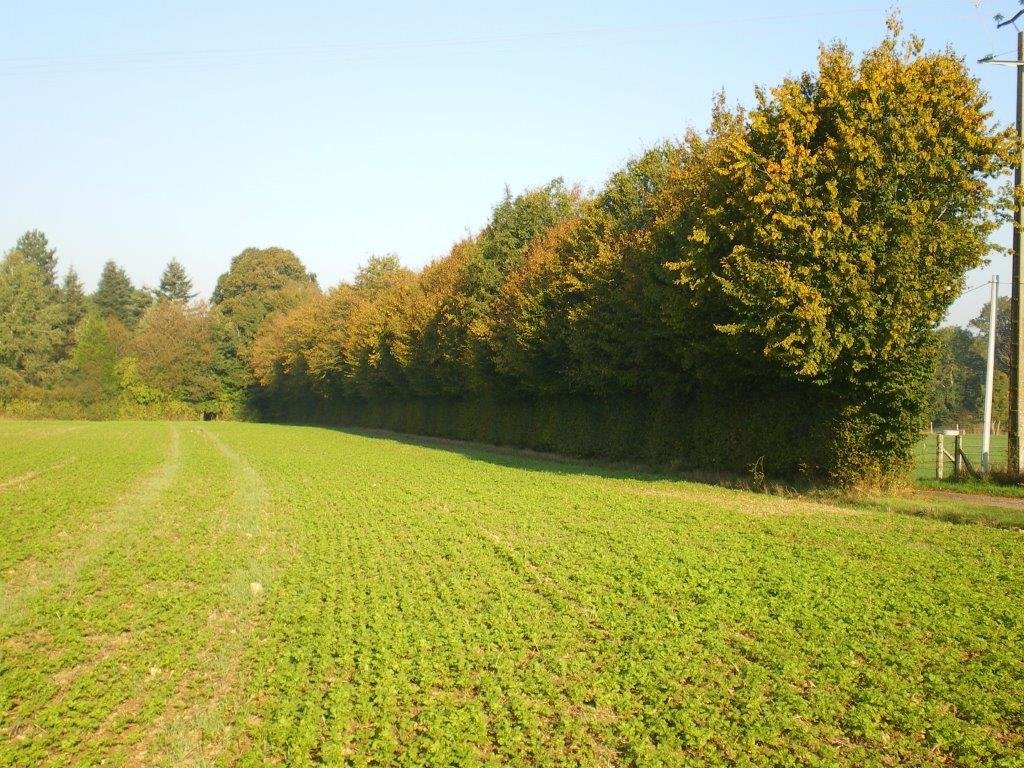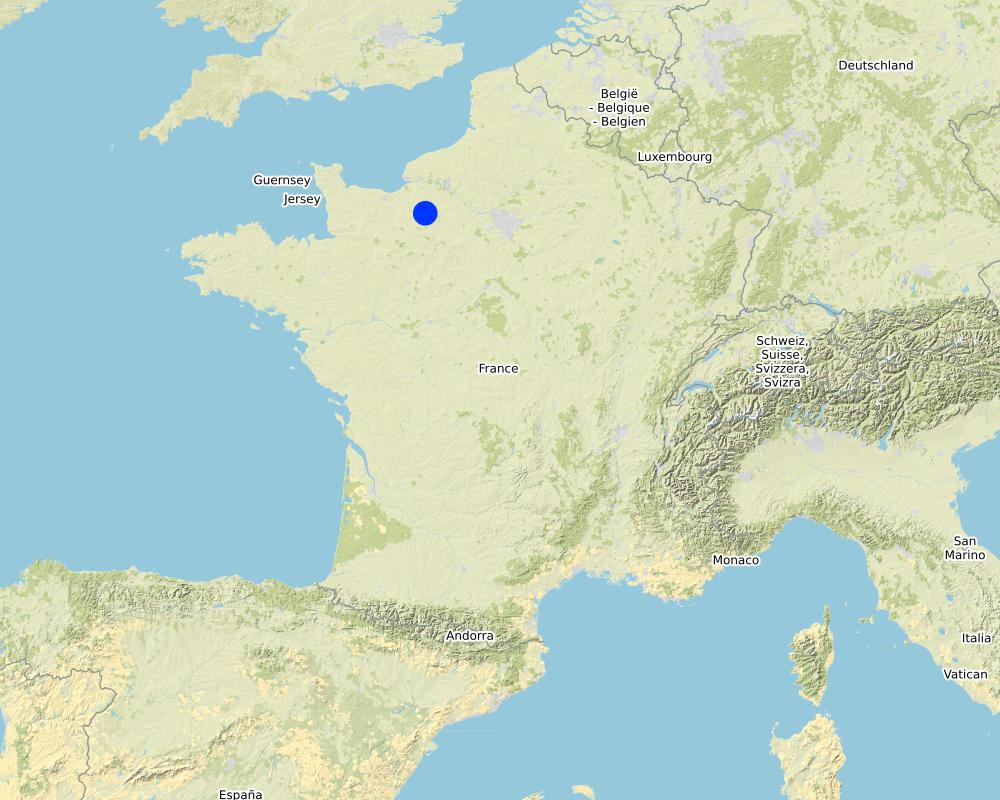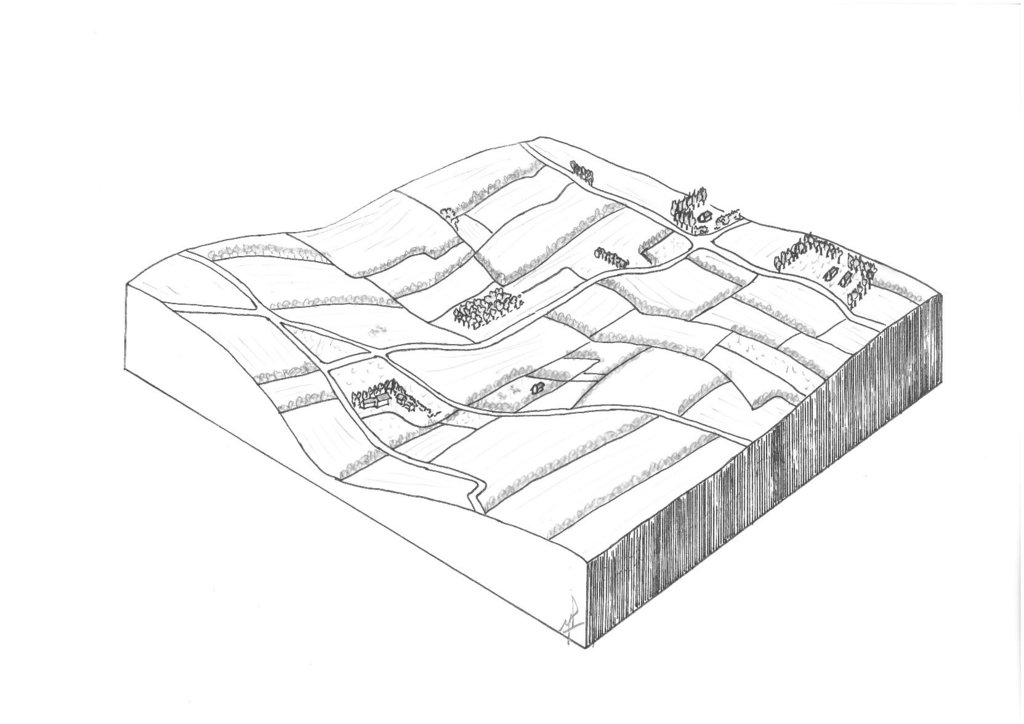Hedgerows as shelter belts along agricultural fields [ฝรั่งเศส]
- ผู้สร้างสรรค์:
- การอัพเดท:
- ผู้รวบรวม: Alan Radbourne
- ผู้เรียบเรียง: David Robinson, David Norris, Sabine Reinsch
- ผู้ตรวจสอบ: Rima Mekdaschi Studer, William Critchley
gestion des haies
technologies_5644 - ฝรั่งเศส
ดูส่วนย่อย
ขยายทั้งหมด ย่อทั้งหมด1. ข้อมูลทั่วไป
1.2 รายละเอียดที่ติดต่อได้ของผู้รวบรวมและองค์กรที่เกี่ยวข้องในการประเมินและการจัดเตรียมทำเอกสารของเทคโนโลยี
วิทยากรหลัก
ผู้เชี่ยวชาญ SLM:
Pivain Yann
Chambre d’agriculture de Normandie
ฝรั่งเศส
ผู้ใช้ที่ดิน:
Odienne Eric
EARL Bril Odienne
ฝรั่งเศส
ชื่อของโครงการซึ่งอำนวยความสะดวกในการทำเอกสารหรือการประเมินเทคโนโลยี (ถ้าเกี่ยวข้อง)
European Interreg project FABulous Farmersชื่อขององค์กรซึ่งอำนวยความสะดวกในการทำเอกสารหรือการประเมินเทคโนโลยี (ถ้าเกี่ยวข้อง)
UK Centre for Ecology & Hydrology (CEH) - สหราชอาณาจักรชื่อขององค์กรซึ่งอำนวยความสะดวกในการทำเอกสารหรือการประเมินเทคโนโลยี (ถ้าเกี่ยวข้อง)
Association des Chambres d’agriculture de l’Arc Atlantique (AC3A) - ฝรั่งเศส1.3 เงื่อนไขการใช้ข้อมูลที่ได้บันทึกผ่านทาง WOCAT
ผู้รวบรวมและวิทยากรหลักยอมรับเงื่อนไขเกี่ยวกับการใช้ข้อมูลที่ถูกบันทึกผ่านทาง WOCAT:
ใช่
1.4 การเปิดเผยเรื่องความยั่งยืนของเทคโนโลยีที่ได้อธิบายไว้
เทคโนโลยีที่ได้อธิบายไว้นี้เป็นปัญหาของความเสื่อมโทรมโทรมของที่ดินหรือไม่ จึงไม่ได้รับการยอมรับว่าเป็นเทคโนโลยีเพื่อการจัดการที่ดินอย่างยั่งยืน:
ไม่ใช่
2. การอธิบายลักษณะของเทคโนโลยี SLM
2.1 การอธิบายแบบสั้น ๆ ของเทคโนโลยี
คำจำกัดความของเทคโนโลยี:
Hedgerows are important to shelter the functional biodiversity necessary for natural regulation of crop pests. The extent of this effect depends on hedgerow management at farm level.
2.2 การอธิบายแบบละเอียดของเทคโนโลยี
คำอธิบาย:
Hedgerows are typical landscape features of rural Normandy. They surround agricultural fields, whether cultivated or under grassland. Hedges were already prominent in Normandy during the 19th century, and they reached a peak between the first and second world wars. However, since the 1960s, the restructuring of agricultural land and technical and technological developments in agriculture have led to the disappearance of hedgerows. The challenge since the beginning of the 21st century has been to maintain the existing hedgerows and to establish others. This is important in the light of today’s agri-environmental and climate issues.
The technology of replacing, restoring or planting new hedgerows has been applied in an area of mixed farming for the benefit of crop and animal protection, watercourse and soil erosion buffering and protection, and landscape and habitat connectivity improvements. The technology has been applied in a locality by a small number of farmers over a number of recent years.
Hedgerows are planted on the periphery of the fields with species spaced at 0.5 to 1 m apart. There are between 1 and 3, sometimes even 4 different vegetative types used in establishing the hedgerows - herbaceous, bushy, and shrubby plants and trees. The current average length is 36 metres of hedge per hectare. The position of ancient hedgerows in the landscape is the result of the history of parcels of land. In contrast, over the last ten years, agri-environmental criteria have been taken into account in selecting planting sites. The main local species used for new hedges are: Fraxinus, Quercus, Tilia, Carpinus, Acer campestre, Crataegus, Corylus and Ilex. Each hedge is considered to have an influence ranging from 50 to 200 m away from it in terms of windspeed, runoff, and biodiversity.
Hedgerows play a very important role in preventing:
- Biological degradation through maintaining and increasing wildlife biodiversity and stimulating biological regulation of crop pests
- Climate-induced impacts both at the local level (decrease of wind speeds, decrease of evapotranspiration, shade for animals) and at global level (carbon storage, substitution of fossil energies by renewable energy)
- Water degradation through maintaining and improving qualitative and quantitative regulation of water at the watershed scale
- Soil erosion by water and chemical deterioration through the conservation of soils
- Soil erosion by wind
Despite these benefits, this SLM technology has not yet been taken up widely. It is more than necessary to restart hedgerow management with Normandy farmers, especially as the use of external inputs (e.g. fertilizers and pesticides) is increasingly expensive for both farmers and society.
The compilation of this SLM is a part of the European Interreg project FABulous Farmers which aims to reduce the reliance on external inputs by encouraging the use of methods and interventions that increase the farm’s Functional AgroBiodiversity (FAB). Visit www.fabulousfarmers.eu and www.nweurope.eu/Fabulous-Farmers for more information.
2.3 รูปภาพของเทคโนโลยี
2.5 ประเทศภูมิภาค หรือสถานที่ตั้งที่เทคโนโลยีได้นำไปใช้และได้รับการครอบคลุมโดยการประเมินนี้
ประเทศ:
ฝรั่งเศส
ภูมิภาค/รัฐ/จังหวัด:
Normandy
ระบุการกระจายตัวของเทคโนโลยี:
- กระจายไปอย่างสม่ำเสมอในพื้นที่
If precise area is not known, indicate approximate area covered:
- 10-100 ตร.กม.
Is/are the technology site(s) located in a permanently protected area?
ไม่ใช่
Map
×2.6 วันที่การดำเนินการ
ถ้าไม่รู้ปีที่แน่นอน ให้ระบุวันที่โดยประมาณ:
- น้อยกว่า 10 ปี (ไม่นานนี้)
2.7 คำแนะนำของเทคโนโลยี
ให้ระบุว่าเทคโนโลยีถูกแนะนำเข้ามาอย่างไร:
- เป็นส่วนหนึ่งของระบบแบบดั้งเดิมที่ทำก้นอยู่ (> 50 ปี)
- ทางโครงการหรือจากภายนอก
3. การจัดประเภทของเทคโนโลยี SLM
3.1 วัตถุประสงค์หลักของเทคโนโลยี
- ปรับปรุงการผลิตให้ดีขึ้น
- ลด ป้องกัน ฟื้นฟู การเสื่อมโทรมของที่ดิน
- รักษาสภาพหรือปรับปรุงความหลากหลายทางชีวภาพ
- ปรับตัวเข้ากับการเปลี่ยนแปลงภูมิอากาศของโลก สภาพภูมิอากาศที่รุนแรงและผลกระทบ
- สร้างผลกระทบทางด้านเศรษฐกิจที่เป็นประโยชน์
3.2 ประเภทของการใช้ที่ดินในปัจจุบันที่ได้นำเทคโนโลยีไปใช้
Land use mixed within the same land unit:
ไม่ใช่

พื้นที่ปลูกพืช
- การปลูกพืชล้มลุกอายุปีเดียว
- various root and cereal crops over time
จำนวนของฤดูเพาะปลูกต่อปี:
- 1
Is intercropping practiced?
ไม่ใช่
Is crop rotation practiced?
ใช่
ถ้าใช่ ระบุ:
A variety of crops are grown in rotation, usually cereal or root crops dependent upon market demand - this technology is less dependent on the crop grown but the benefits of a hedgerow planted at the edges reduce the cropping area into smaller parcels.

ทุ่งหญ้าเลี้ยงสัตว์
ทุ่งหญ้าเลี้ยงสัตว์ที่มีการจัดการแบบเข้มข้นหรือการผลิตอาหารสัตว์:
- ทุ่งหญ้าเลี้ยงสัตว์ที่ได้มีการปรับปรุง (Improved pastures)
Animal type:
- cattle - non-dairy beef
Is integrated crop-livestock management practiced?
ไม่ใช่
Species:
cattle - non-dairy beef
Count:
20

ป่า/พื้นที่ทำไม้
- ป่า/พื้นที่ทำไม้
Tree plantation, afforestation: Specify origin and composition of species:
- การปลูกหลายพันธุ์รวมกัน
Type of tree plantation, afforestation:
- temperate continental forest plantation
- Main local species Fraxinus, Quercus, Tilia, Carpinus, Acer campestre, Crataegus, Corylus, Ilex
Are the trees specified above deciduous or evergreen?
- mixed deciduous/ evergreen
ผลิตภัณฑ์และบริการ:
- ไม้ที่นำมาทำเป็นเชื้อเพลิง
- การอนุรักษ์ / ป้องกันธรรมชาติ
3.3 Has land use changed due to the implementation of the Technology?
Has land use changed due to the implementation of the Technology?
- No (Continue with question 3.4)
3.4 การใช้น้ำ
การใช้น้ำของที่ดินที่มีการใช้เทคโนโลยีอยู่:
- จากน้ำฝน
3.5 กลุ่ม SLM ที่ตรงกับเทคโนโลยีนี้
- แนวกันลมหรือแนวต้านลม
- การปรับปรุงดิน / พืชคลุมดิน
- การจัดการศัตรูพืชและโรคพืชแบบผสมผสาน (รวมถึงเกษตรอินทรีย์ด้วย)
3.6 มาตรการ SLM ที่ประกอบกันเป็นเทคโนโลยี

มาตรการอนุรักษ์ด้วยวิธีพืช
- V1: ต้นไม้และพุ่มไม้คลุมดิน

มาตรการอนุรักษ์ด้วยโครงสร้าง
- S11: อื่น ๆ

มาตรการอนุรักษ์ด้วยการจัดการ
- M3: การวางผังตามสิ่งแวดล้อมทางธรรมชาติและสิ่งแวดล้อมของมนุษย์
- M5: การควบคุมหรือการเปลี่ยนแปลงขององค์ประกอบของชนิดพันธุ์
3.7 รูปแบบหลักของการเสื่อมโทรมของที่ดินที่ได้รับการแก้ไขโดยเทคโนโลยี

การกัดกร่อนของดินโดยน้ำ
- Wg (Gully erosion): การกัดกร่อนแบบร่องธารหรือการทำให้เกิดร่องน้ำเซาะ

การกัดกร่อนของดินโดยลม
- Et (Loss of topsoil): การสูญเสียดินชั้นบน

การเสื่อมโทรมของดินทางด้านเคมี
- Cn (Fertility decline): ความอุดมสมบูรณ์และปริมาณอินทรียวัตถุในดินถูกทำให้ลดลงไป (ไม่ได้เกิดจากสาเหตุการกัดกร่อน)

การเสื่อมโทรมของดินทางด้านชีวภาพ
- Bh (Loss of habitat): การสูญเสียแหล่งที่อยู่
- Bs (Quality and species composition): องค์ประกอบหรือความหลากหลายทางคุณภาพและชนิดพันธุ์ลดลง
- Bp (Increase of pests/diseases): การเพิ่มขึ้นของศัตรูพืชและโรคพืช
3.8 การป้องกัน การลดลง หรือการฟื้นฟูความเสื่อมโทรมของที่ดิน
ระบุเป้าหมายของเทคโนโลยีกับความเสื่อมโทรมของที่ดิน:
- ป้องกันความเสื่อมโทรมของที่ดิน
- ลดความเสื่อมโทรมของดิน
4. ข้อมูลจำเพาะด้านเทคนิค กิจกรรมการนำไปปฏิบัติใช้ ปัจจัยนำเข้า และค่าใช้จ่าย
4.1 แบบแปลนทางเทคนิคของเทคโนโลยี
ข้อมูลจำเพาะด้านเทคนิค (แบบแปลนทางเทคนิคของเทคโนโลยี):
Hedgerows are planted on the periphery of the plots. The trees are spaced 0.5 to 1 m apart. The height varies from 1.5 m to more than 20 m. There are between 1 and 3, even 4 different vegetative strata (herbaceous, bushy, shrubby, tree). The local average length is 36 m of hedge per hectare (the departmental average is 19 m / ha). The position of old hedges is more the result of the history of parcels (properties) than linked to agri-environmental criteria. Over the last ten years, agri-environmental criteria have been taken into account in choosing planting sites. The main local species: Fraxinus, Quercus, Tilia, Carpinus, Acer campestre, Crataegus, Corylus and Ilex.
Each hedge is considered to have an influence ranging from 50 to 200 m away from it (in terms of wind, runoff, biodiversity).
ผู้เขียน:
Yann Pivain
วันที่:
01/11/2019
4.2 ข้อมูลทั่วไปเกี่ยวกับการคำนวณปัจจัยนำเข้าและค่าใช้จ่าย
ให้ระบุว่าค่าใช้จ่ายและปัจจัยนำเข้าได้รับการคำนวณอย่างไร:
- ต่อหน่วยเทคโนโลยี
โปรดระบุหน่วย:
per 1 km of new / replanted hedgerow
อื่นๆ หรือสกุลเงินประจำชาติ (ระบุ):
€
If relevant, indicate exchange rate from USD to local currency (e.g. 1 USD = 79.9 Brazilian Real): 1 USD =:
0.9
ระบุค่าเฉลี่ยของค่าจ้างในการจ้างแรงงานต่อวัน:
120
4.3 กิจกรรมเพื่อการจัดตั้ง
| กิจกรรม | Timing (season) | |
|---|---|---|
| 1. | Decide on planting site, the design/layout of the hedge and the species | Spring |
| 2. | Soil preparation through clearing of land and harrowing | After harvest of crops |
| 3. | Application of mulch to planting strip | After harvest of crops |
| 4. | Planting of trees & protections (e.g. deer guards) | November to January |
4.4 ค่าใช้จ่ายของปัจจัยนำเข้าที่จำเป็นสำหรับการจัดตั้ง
| ปัจจัยนำเข้า | หน่วย | ปริมาณ | ค่าใช้จ่ายต่อหน่วย | ค่าใช้จ่ายทั้งหมดต่อปัจจัยนำเข้า | %ของค่าใช้จ่ายที่ก่อให้เกิดขึ้นโดยผู้ใช้ที่ดิน | |
|---|---|---|---|---|---|---|
| แรงงาน | Design and planning | person-days | 0.3 | 120.0 | 36.0 | 50.0 |
| แรงงาน | Surface preparation for planting | person-days | 0.1 | 120.0 | 12.0 | 100.0 |
| แรงงาน | Application of mulch | person-days | 0.3 | 120.0 | 36.0 | 100.0 |
| แรงงาน | Planting trees | person-days | 11.0 | 120.0 | 1320.0 | 100.0 |
| อุปกรณ์ | Tractor with harrow | machine-days | 0.1 | 50.0 | 5.0 | 100.0 |
| วัสดุด้านพืช | Trees | Piece | 1000.0 | 2.0 | 2000.0 | 50.0 |
| วัสดุด้านพืช | Tree protection (i.e. wild animal guards) | Piece | 1000.0 | 0.5 | 500.0 | 80.0 |
| วัสดุด้านพืช | Mulching | Piece | 1000.0 | 1.3 | 1300.0 | 80.0 |
| ค่าใช้จ่ายทั้งหมดของการจัดตั้งเทคโนโลยี | 5209.0 | |||||
| Total costs for establishment of the Technology in USD | 5787.78 | |||||
ถ้าผู้ใช้ที่ดินรับภาระน้อยกว่า 100% ของค่าใช้จ่าย ให้ระบุว่าใครเป็นผู้รับผิดชอบส่วนที่เหลือ:
local community / subsidy
แสดงความคิดเห็น:
Costs do not include training of farmers.
4.5 การบำรุงรักษาสภาพหรือกิจกรรมที่เกิดขึ้นเป็นประจำ
| กิจกรรม | ช่วงระยะเวลา/ความถี่ | |
|---|---|---|
| 1. | Hedgerow maintenance (cutting/pruning) | From June to December every 3rd year |
| 2. | Wood harvest (20 years after planting) | December to March |
4.6 ค่าใช้จ่ายของปัจจัยนำเข้าและกิจกรรมที่เกิดขึ้นเป็นประจำที่ต้องการการบำรุงรักษา (ต่อปี)
| ปัจจัยนำเข้า | หน่วย | ปริมาณ | ค่าใช้จ่ายต่อหน่วย | ค่าใช้จ่ายทั้งหมดต่อปัจจัยนำเข้า | %ของค่าใช้จ่ายที่ก่อให้เกิดขึ้นโดยผู้ใช้ที่ดิน | |
|---|---|---|---|---|---|---|
| แรงงาน | Hedgerow maintenance (cutting/pruning) | day | 0.2 | 120.0 | 24.0 | 100.0 |
| อุปกรณ์ | Maintenance cutter | day | 0.2 | 50.0 | 10.0 | 100.0 |
| ค่าใช้จ่ายทั้งหมดของการบำรุงรักษาสภาพเทคโนโลยี | 34.0 | |||||
| Total costs for maintenance of the Technology in USD | 37.78 | |||||
4.7 ปัจจัยสำคัญที่สุดที่มีผลกระทบต่อค่าใช้จ่าย
ปัจจัยสำคัญที่สุดที่มีผลกระทบต่อค่าใช้จ่ายต่างๆ:
Time necessary for maintenance,
Good training to do quality work
5. สิ่งแวดล้อมทางธรรมชาติและของมนุษย์
5.1 ภูมิอากาศ
ฝนประจำปี
- < 250 ม.ม.
- 251-500 ม.ม.
- 501-750 ม.ม.
- 751-1,000 ม.ม.
- 1,001-1,500 ม.ม.
- 1,501-2,000 ม.ม.
- 2,001-3,000 ม.ม.
- 3,001-4,000 ม.ม.
- > 4,000 ม.ม.
ระบุปริมาณน้ำฝนเฉลี่ยรายปี (ถ้ารู้) :หน่วย ม.ม.
850.00
ข้อมูลจำเพาะ/ความคิดเห็นเรื่องปริมาณน้ำฝน:
No dry season or marked rainy season. The rains fall fairly regularly
ระบุชื่อของสถานีตรวดวัดอากาศที่ใช้อ้างอิงคือ:
Evreux (27000)
เขตภูมิอากาศเกษตร
- กึ่งชุ่มชื้น
5.2 สภาพภูมิประเทศ
ค่าเฉลี่ยความลาดชัน:
- ราบเรียบ (0-2%)
- ลาดที่ไม่ชัน (3-5%)
- ปานกลาง (6-10%)
- เป็นลูกคลื่น (11-15%)
- เป็นเนิน (16-30%)
- ชัน (31-60%)
- ชันมาก (>60%)
ธรณีสัณฐาน:
- ที่ราบสูง/ที่ราบ
- สันเขา
- ไหล่เขา
- ไหล่เนินเขา
- ตีนเนิน
- หุบเขา
ระดับความสูง:
- 0-100 เมตร
- 101-500 เมตร
- 501-1,000 เมตร
- 1,001-1,500 เมตร
- 1,501-2,000 เมตร
- 2,001-2,500 เมตร
- 2,501-3,000 เมตร
- 3,001-4,000 เมตร
- > 4,000 เมตร
ให้ระบุถ้าเทคโนโลยีได้ถูกนำไปใช้:
- ไม่เกี่ยวข้อง
5.3 ดิน
ค่าเฉลี่ยความลึกของดิน:
- ตื้นมาก (0-20 ซ.ม.)
- ตื้น (21-50 ซ.ม.)
- ลึกปานกลาง (51-80 ซ.ม.)
- ลึก (81-120 ซ.ม.)
- ลึกมาก (>120 ซ.ม.)
เนื้อดิน (ดินชั้นบน):
- ปานกลาง (ดินร่วน ทรายแป้ง)
- ละเอียด/หนัก (ดินเหนียว)
เนื้อดินล่าง (> 20 ซ.ม.ต่ำจากผิวดิน):
- ละเอียด/หนัก (ดินเหนียว)
อินทรียวัตถุในดิน:
- ปานกลาง (1-3%)
5.4 ความเป็นประโยชน์และคุณภาพของน้ำ
ระดับน้ำใต้ดิน:
> 50 เมตร
น้ำไหลบ่าที่ผิวดิน:
ดี
คุณภาพน้ำ (ที่ยังไม่ได้บำบัด):
เป็นน้ำเพื่อการดื่มที่ไม่ดี (จำเป็นต้องได้รับการบำบัด)
Water quality refers to:
both ground and surface water
ความเค็มของน้ำเป็นปัญหาหรือไม่:
ไม่ใช่
กำลังเกิดน้ำท่วมในพื้นที่หรือไม่:
ใช่
บ่อยครั้ง:
เป็นครั้งเป็นคราว
5.5 ความหลากหลายทางชีวภาพ
ความหลากหลายทางชนิดพันธุ์:
- ปานกลาง
ความหลากหลายของแหล่งที่อยู่:
- สูง
5.6 ลักษณะของผู้ใช้ที่ดินที่นำเทคโนโลยีไปปฏิบัติใช้
อยู่กับที่หรือเร่ร่อน:
- อยู่กับที่
แนวทางการตลาดของระบบการผลิต:
- ทำการค้า/การตลาด
รายได้ที่มาจากนอกฟาร์ม:
- < 10% ของรายได้ทั้งหมด
ระดับของความมั่งคั่งโดยเปรียบเทียบ:
- รวย
เป็นรายบุคคล/ครัวเรือน:
- เป็นรายบุคคล/ครัวเรือน
ระดับของการใช้เครื่องจักรกล:
- การใช้เครื่องจักรหรือเครื่องยนต์
เพศ:
- หญิง
- ชาย
อายุของผู้ใช้ที่ดิน:
- ผู้เยาว์
- วัยกลางคน
5.7 Average area of land used by land users applying the Technology
- < 0.5 เฮกตาร์
- 0.5-1 เฮกตาร์
- 1-2 เฮกตาร์
- 2-5 เฮกตาร์
- 5-15 เฮกตาร์
- 15-50 เฮกตาร์
- 50-100 เฮกตาร์
- 100-500 เฮกตาร์
- 500-1,000 เฮกตาร์
- 1,000-10,000 เฮกตาร์
- >10,000 เฮกตาร์
พิจารณาว่าเป็นขนาดเล็ก กลาง หรือขนาดใหญ่ (ซึ่งอ้างอิงถึงบริบทระดับท้องถิ่น):
- ขนาดกลาง
5.8 กรรมสิทธิ์ในที่ดิน สิทธิในการใช้ที่ดินและสิทธิในการใช้น้ำ
กรรมสิทธิ์ในที่ดิน:
- รายบุคคล ไม่ได้รับสิทธิครอบครอง
- รายบุคคล ได้รับสิทธิครอบครอง
สิทธิในการใช้ที่ดิน:
- รายบุคคล
สิทธิในการใช้น้ำ:
- เกี่ยวกับชุมชน (ถูกจัดระเบียบ)
Are land use rights based on a traditional legal system?
ไม่ใช่
5.9 การเข้าถึงบริการและโครงสร้างพื้นฐาน
สุขภาพ:
- จน
- ปานกลาง
- ดี
การศึกษา:
- จน
- ปานกลาง
- ดี
ความช่วยเหลือทางด้านเทคนิค:
- จน
- ปานกลาง
- ดี
การจ้างงาน (เช่น ภายนอกฟาร์ม):
- จน
- ปานกลาง
- ดี
ตลาด:
- จน
- ปานกลาง
- ดี
พลังงาน:
- จน
- ปานกลาง
- ดี
ถนนและการขนส่ง:
- จน
- ปานกลาง
- ดี
น้ำดื่มและการสุขาภิบาล:
- จน
- ปานกลาง
- ดี
บริการด้านการเงิน:
- จน
- ปานกลาง
- ดี
6. ผลกระทบและสรุปคำบอกกล่าว
6.1 ผลกระทบในพื้นที่ดำเนินการ (On-site) จากการใช้เทคโนโลยี
ผลกระทบทางด้านเศรษฐกิจและสังคม
การผลิต
การผลิตพืชผล
แสดงความคิดเห็น/ระบุ:
Possible loss of some cropland replaced with hedgerows, although most hedging in this instance was reinstating old field boundaries - i.e. where historic boundary lines existed but were removed for machenery or to enlarge field size.
คุณภาพพืชผล
แสดงความคิดเห็น/ระบุ:
Greater crop protection and more beneficial species improve crop quality
การผลิตสัตว์
แสดงความคิดเห็น/ระบุ:
Shelter belts improve animal welfare leading to better weight gain.
การผลิตไม้
แสดงความคิดเห็น/ระบุ:
Hedgerows can be coppiced for wood crop.
การเสี่ยงต่อความล้มเหลวในการผลิต
แสดงความคิดเห็น/ระบุ:
Shelter belt reduces risk of crop failure from weather extremes (i.e. wind)
ความหลากหลายของผลิตภัณฑ์
แสดงความคิดเห็น/ระบุ:
Wood crop added to diversity of products
พื้นที่สำหรับการผลิต
แสดงความคิดเห็น/ระบุ:
Although loss of crop land, this is replaced with wood crop diversity
การจัดการที่ดิน
แสดงความคิดเห็น/ระบุ:
Smaller parcels of land make land management more restrictive for large machinery.
รายได้และค่าใช้จ่าย
ค่าใช่จ่ายของปัจจัยการผลิตทางการเกษตร
แสดงความคิดเห็น/ระบุ:
Balance of increased time and management of a diversity of crops, yet less crop management with improved pest control and phyicsl stress reduction from more shelter.
รายได้จากฟาร์ม
แสดงความคิดเห็น/ระบุ:
No change in balance of less crop production but addition of woody crop.
ความหลากหลายของแหล่งผลิตรายได้
แสดงความคิดเห็น/ระบุ:
Diversity added with option of woody crop
ภาระงาน
แสดงความคิดเห็น/ระบุ:
Smaller field parcels make crop management harder having to use smaller machinery and there is an addition of hedgerow maintenence workload.
ผลกระทบด้านนิเวศวิทยา
วัฐจักรน้ำหรือน้ำบ่า
คุณภาพน้ำ
แสดงความคิดเห็น/ระบุ:
Hedgerows act as buffer strips capturing wash off from fields before it reaches the water course
น้ำไหลบ่าที่ผิวดิน
แสดงความคิดเห็น/ระบุ:
Hedgerows act as buffer strips capturing wash from fields
การระบายน้ำส่วนเกิน
แสดงความคิดเห็น/ระบุ:
Improved soil infiltration in hedgerows helps drain excess water
ดิน
ความชื้นในดิน
แสดงความคิดเห็น/ระบุ:
Improved soil infiltration in hedgerows helps maintain soil moisture capacity
การสูญเสียดิน
แสดงความคิดเห็น/ระบุ:
Hedgerows act as buffer strips capturing soil wash from fields
การอัดแน่นของดิน
แสดงความคิดเห็น/ระบุ:
Reduced machinery size (in places) reduces compaction, plus less soil compaction by hedgerows.
อินทรียวัตถุในดิน/ต่ำกว่าดินชั้น C
แสดงความคิดเห็น/ระบุ:
Increased organic matter in hedgerows
ความหลากหลายทางชีวภาพของพืชและสัตว์
การปกคลุมด้วยพืช
แสดงความคิดเห็น/ระบุ:
More year round cover
มวลชีวภาพ/เหนือดินชั้น C
แสดงความคิดเห็น/ระบุ:
Increased wih hedgerows
ความหลากหลายทางชีวภาพของพืช
แสดงความคิดเห็น/ระบุ:
More diverse species with planting for hedgerows
ความหลากหลายทางชีวภาพของสัตว์
แสดงความคิดเห็น/ระบุ:
Increased habitat diversity and area for more animal presence and diversity
ชนิดพันธุ์ที่ให้ประโยชน์
แสดงความคิดเห็น/ระบุ:
Encouragement of beneficial species with habitat creation in hedgerows that can aid natural pest and disease control through the presence of predator species that control pest species.
ความหลากหลายของสัตว์
แสดงความคิดเห็น/ระบุ:
Within hedgerow habitat addition
การจัดการศัตรูพืชและโรคพืช
แสดงความคิดเห็น/ระบุ:
Encouragement of beneficial species with habitat creation in hedgerows that can aid natural pest and disease control through the presence of predator species that control pest species.
ลดความเสี่ยงของภัยพิบัติ
ผลกระทบจากน้ำท่วม
แสดงความคิดเห็น/ระบุ:
Improved soil infiltration reduces flooding risk
ความเร็วของลม
แสดงความคิดเห็น/ระบุ:
Shelter belts reduce wind velocity over crops
6.2 ผลกระทบนอกพื้นที่ดำเนินการ (Off-site) จากการใช้เทคโนโลยี
การเกิดมลพิษในน้ำบาดาลหรือแม่น้ำ
แสดงความคิดเห็น/ระบุ:
Hedgerows act as buffer strips capturing wash off from fields before it reaches the water course
ความสามารถต้านทานการเปลี่ยนแปลง / ความสามารถในการคัดกรอง
แสดงความคิดเห็น/ระบุ:
Hedgerows act as buffer strips capturing wash off from fields before it reaches the water course
ตะกอนที่ถูกพัดพามาโดยลม
แสดงความคิดเห็น/ระบุ:
Shelter belts reduce wind velocity over crops and bare soil for less erosion & transportation
ความเสียหายต่อพื้นที่เพาะปลูกของเพื่อนบ้าน
แสดงความคิดเห็น/ระบุ:
Shelter belts reduce wind velocity over crops and bare soil for less erosion & transportation
ผลกระทบของก๊าซเรือนกระจก
แสดงความคิดเห็น/ระบุ:
Increased tree cover supports a reduction in GHG
6.3 การเผชิญและความตอบสนองของเทคโนโลยีต่อการเปลี่ยนแปลงสภาพภูมิอากาศที่ค่อยเป็นค่อยไป และสภาพรุนแรงของภูมิอากาศ / ภัยพิบัติ (ที่รับรู้ได้โดยผู้ใช้ที่ดิน)
การเปลี่ยนแปลงสภาพภูมิอากาศที่ค่อยเป็นค่อยไป
การเปลี่ยนแปลงสภาพภูมิอากาศที่ค่อยเป็นค่อยไป
| ฤดู | increase or decrease | เทคโนโลยีมีวิธีการรับมืออย่างไร | |
|---|---|---|---|
| อุณหภูมิประจำปี | เพิ่มขึ้น | ปานกลาง | |
| ฝนประจำปี | เพิ่มขึ้น | ดี |
สภาพรุนแรงของภูมิอากาศ (ภัยพิบัติ)
ภัยพิบัติทางอุตุนิยมวิทยา
| เทคโนโลยีมีวิธีการรับมืออย่างไร | |
|---|---|
| พายุฝนประจำท้องถิ่น | ปานกลาง |
| พายุลมประจำท้องถิ่น | ปานกลาง |
ภัยพิบัติจากสภาพภูมิอากาศ
| เทคโนโลยีมีวิธีการรับมืออย่างไร | |
|---|---|
| ภัยจากฝนแล้ง | ไม่ค่อยดี |
| ไฟป่า | ไม่ค่อยดี |
| ไฟบนบก | ไม่ค่อยดี |
ภัยพิบัติจากน้ำ
| เทคโนโลยีมีวิธีการรับมืออย่างไร | |
|---|---|
| น้ำท่วมตามปกติ (แม่น้ำ) | ไม่ค่อยดี |
ภัยพิบัติทางชีวภาพ
| เทคโนโลยีมีวิธีการรับมืออย่างไร | |
|---|---|
| โรคระบาด | ปานกลาง |
| การบุกรุกของแมลง / หนอน | ปานกลาง |
ผลลัพธ์ตามมาที่เกี่ยวข้องกับภูมิอากาศอื่น ๆ
ผลลัพธ์ตามมาที่เกี่ยวข้องกับภูมิอากาศอื่น ๆ
| เทคโนโลยีมีวิธีการรับมืออย่างไร | |
|---|---|
| ช่วงการปลูกพืชที่ขยายออกไป | ไม่ค่อยดี |
| ช่วงการปลูกพืชที่ลดลงมา | ไม่ดี |
| การสูงขึ้นของระดับน้ำทะเล | ไม่ดี |
6.4 การวิเคราะห์ค่าใช้จ่ายและผลประโยชน์ที่ได้รับ
ผลประโยชน์ที่ได้รับเปรียบเทียบกับค่าใช้จ่ายในการจัดตั้งเป็นอย่างไร (จากมุมมองของผู้ใช้ที่ดิน)
ผลตอบแทนระยะสั้น:
ด้านลบ
ผลตอบแทนระยะยาว:
ด้านบวกเล็กน้อย
ผลประโยชน์ที่ได้รับเปรียบเทียบกับค่าใช้จ่ายในการบำรุงรักษาหรือต้นทุนที่เกิดขึ้นซ้ำอีก เป็นอย่างไร (จากมุมมองของผู้ใช้ที่ดิน)
ผลตอบแทนระยะสั้น:
เป็นกลางหรือสมดุล
ผลตอบแทนระยะยาว:
เป็นกลางหรือสมดุล
6.5 การปรับตัวของเทคโนโลยี
- 1-10%
Of all those who have adopted the Technology, how many did so spontaneously, i.e. without receiving any material incentives/ payments?
- 0-10%
6.6 การปรับตัว
เทคโนโลยีได้รับการปรับเปลี่ยนเมื่อเร็วๆนี้ เพื่อให้ปรับตัวเข้ากับสภาพที่กำลังเปลี่ยนแปลงหรือไม่:
ใช่
อื่น ๆ (ระบุ):
Over the last ten years, agri-environmental criteria have been taken into account in choosing planting sites
6.7 จุดแข็ง / ข้อได้เปรียบ / โอกาสของเทคโนโลยี
| จุดแข็ง / ข้อได้เปรียบ / โอกาสในทัศนคติของผู้ใช้ที่ดิน |
|---|
| Reduced winds and wind erosion |
| Creation of spaces for wildlife leading to increased biodiversity |
| จุดแข็ง / ข้อได้เปรียบ / โอกาสในทัศนคติของผู้รวบรวมหรือวิทยากรหลัก |
|---|
| Creation of climate zone "temperate" favourable to crops and / or animals |
| More space for biodiversity and habitat, particularly those that provide a beneficial return for agricultural production |
| Diversification to add woody crops |
| Connected landscape and habitats through hedgerow linkages to each other and woodlands. |
6.8 จุดอ่อน / ข้อเสียเปรียบ / ความเสี่ยงของเทคโนโลยีและวิธีการแก้ไข
| จุดอ่อน / ข้อเสียเปรียบ / ความเสี่ยงในทัศนคติของผู้ใช้ที่ดิน | มีวิธีการแก้ไขได้อย่างไร |
|---|---|
| Cost and maintenance time | Use harvested wood/material to cover increased costs for farmer to maintain hedgerows |
| Competition between cropping areas for natural resources | Increase the technical understanding of tree management / crop fringes |
| Unclear EU financial support for hedge management (instability of the common agricultural policy) | Unknown / public or private payment for ecosystem services and goods |
| จุดอ่อน / ข้อเสียเปรียบ / ความเสี่ยงในทัศนคติของผู้รวบรวมหรือวิทยากรหลัก | มีวิธีการแก้ไขได้อย่างไร |
|---|---|
| Unclear EU financial support for hedge management (instability of the common agricultural policy) | Unknown / public or private payment for ecosystem services and goods |
7. การอ้างอิงและการเชื่อมต่อ
7.1 วิธีการและแหล่งข้อมูล
- ไปเยี่ยมชมภาคสนาม การสำรวจพื้นที่ภาคสนาม
1 field visit
- การสัมภาษณ์กับผู้ใช้ที่ดิน
2 land users who have implemented hedgerow planting
- การสัมภาษณ์ผู้เชี่ยวชาญด้าน SLM หรือผู้ชำนาญ
1 SLM expert consulted as information compiled
- การเก็บรวบรวมมาจากรายงานและเอกสารที่มีอยู่
Les haies Rurales : rôles, création, entretien
วันที่เก็บรวบรวมข้อมูล(ภาคสนาม) :
08/10/2019
7.2 การอ้างอิงถึงสิ่งตีพิมพ์
หัวข้อ, ผู้เขียน, ปี, หมายเลข ISBN:
Les haies Rurales : rôles, création, entretien / Fabien LIAGRE / 2006 / ISBN 2-85557-137-5
ชื่อเรื่อง ผู้เขียน ปี ISBN:
Edition France Agricole / 40 €
ลิงก์และโมดูล
ขยายทั้งหมด ย่อทั้งหมดลิงก์
ไม่มีลิงก์
โมดูล
ไม่มีโมดูล


